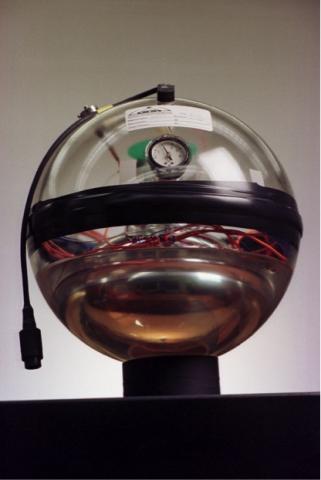AMANDA sees first neutrinos in ice

The photomultiplier tubes within these basketball-sized glass orbs are at the heart of the AMANDA neutrino telescope, a novel telescope being built at the South Pole to detect cosmic neutrinos (Image: Jeff Miller)
The Antarctic Muon and Neutrino Detector Array (AMANDA) telescope - which lies buried under kilometer of ice - aims to detect high-energy cosmic neutrinos from our own or nearby galaxies. Neutrinos are mysterious particles associated with radioactive phenomena. They have little mass, no electric charge and can travel straight through the earth as they interact only very weakly with other matter. Neutrinos are numerous in the cosmos at large so have a significant influence on the events of the universe. They are present in the universe as leftovers of creation and are emitted by processes that fuel the sun. Neutrinos spill out in huge numbers from colossal stellar explosions.
The idea behind the AMANDA telescope is that neutrinos interacting with ice emit a brief flash of blue light which can be detected if the ice is clear enough. Since neutrinos are so weakly interacting, a cubic kilometer of ice is required to detect them. In the Antarctic, the ice at this depth below is as clear as a diamond because the pressure from the snow above squeezes out all the air bubbles. Consequently, the ice is clear enough that the blue light flashes caused by the interaction of neutrinos can travel undimmed for more than 100 metres to be detected by photomultipliers. Photomultipliers convert the faint light to an electric current which travels to the surface to record the interaction. When star explodes as a supernova in the galaxy, bursts of neutrinos will burst through the earth and send flashes of blue light through the Antarctic ice. After nine years of operation, AMANDA was incorporated into the full size detector, IceCube.